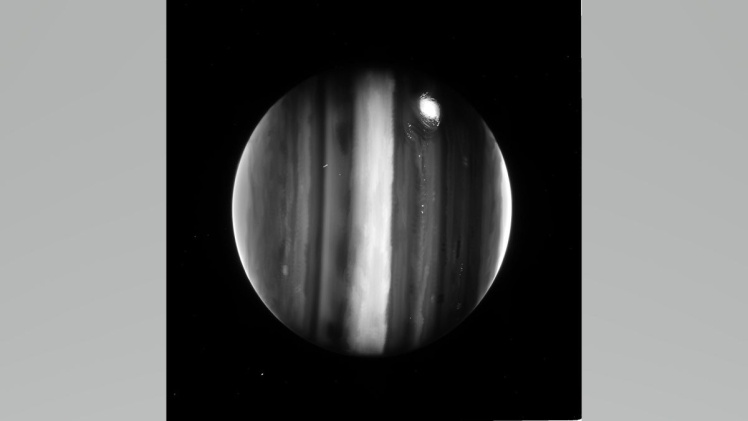The National Aeronautics and Space Administration (NASA) has published a raw image of Jupiter, in which the planet appears to be "on its side".
This image, taken by the telescope on July 27, shows the giant planet with storms, the Great Red Spot and streaks in the atmosphere.
The image should help astronomers study the planetʼs atmosphere — the characteristics of its thermal structure, winds and aurora.
The NIRCam imaged Jupiter for nearly 11 minutes using the F212N filter, which observes light with a wavelength of 2.12 microns—the size of a bacterium.
In early August, the telescope is scheduled to study Jupiterʼs volcanic moon Io, the large asteroid Hygeia, and the remnants of the supernova Cassiopeia A.
- On December 25, 2021, NASA launched into space the most expensive telescope in history — the James Webb apparatus worth $10 billion. It was sent to a distance of 1.5 million kilometers from Earth — to the L2 point. There, it will allow humanity to look much deeper into the universe and study galaxies and planets in more detail.
- Later, NASA reported that the telescope will work longer than expected. The analysis of the trajectory showed that its fuel reserve would be enough for more than 10 years of operation.
- On July 12, 2022, the first infrared image from the James Webb telescope was shown in the United States. US President Joe Biden took part in the presentation.
